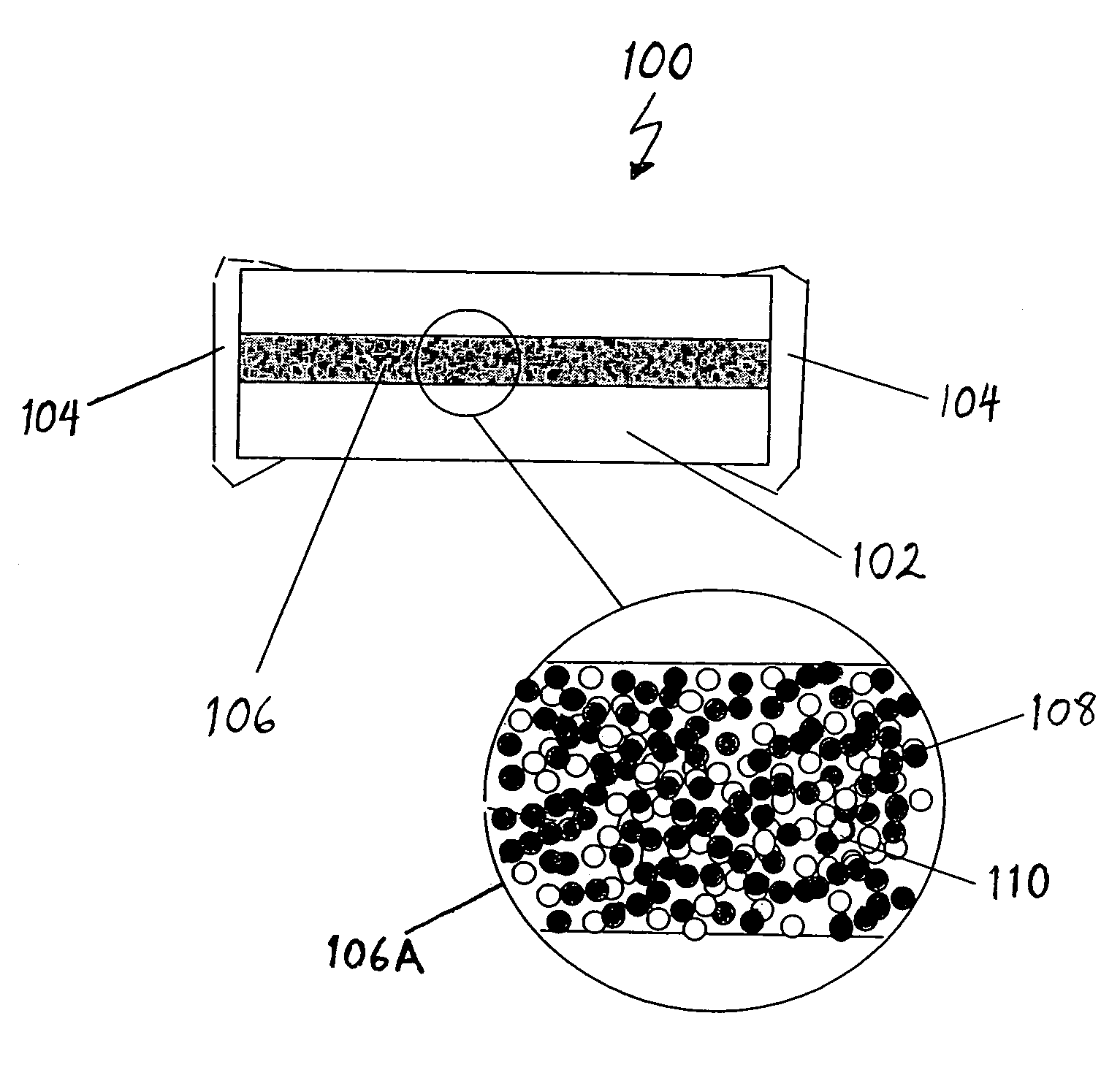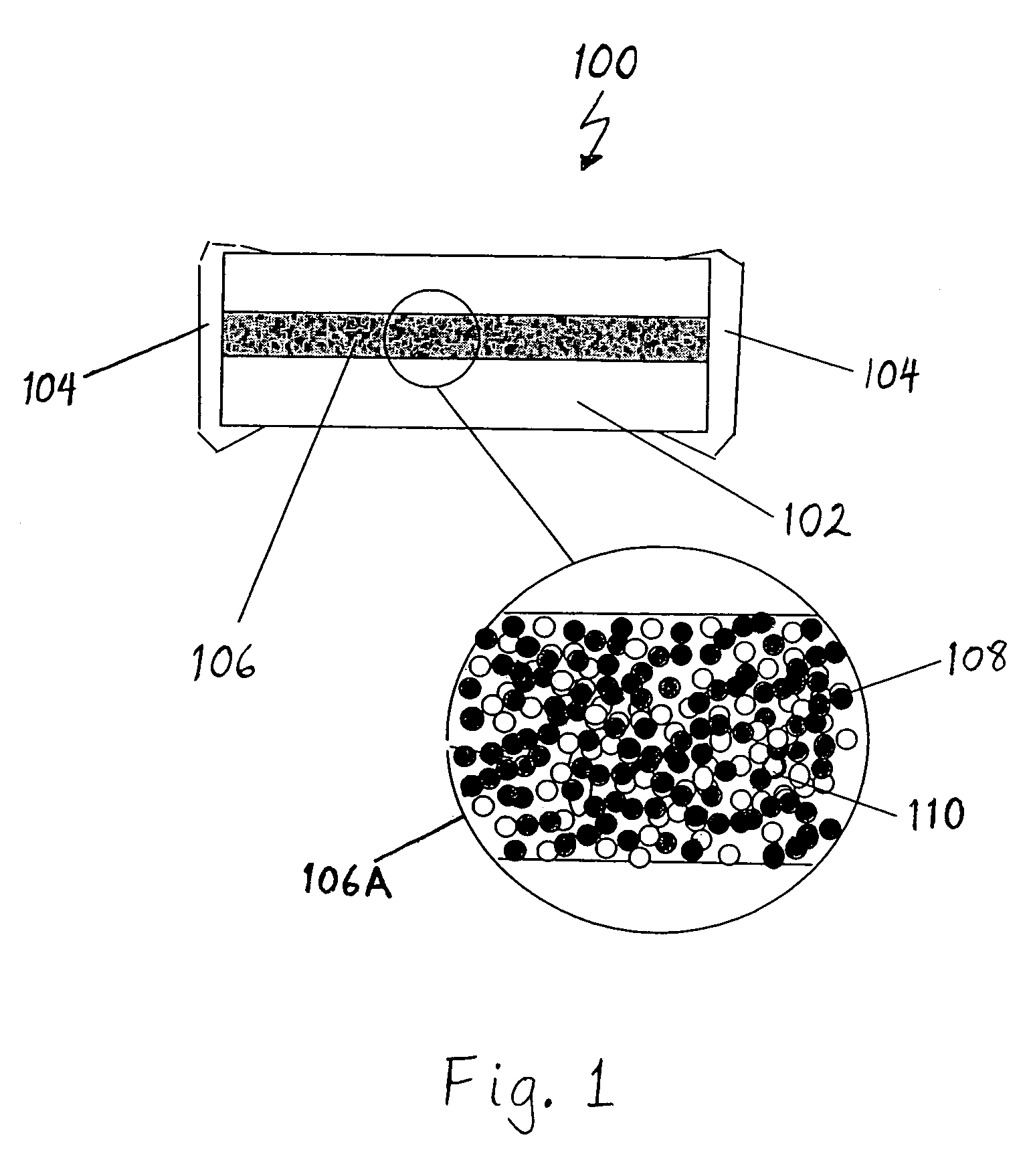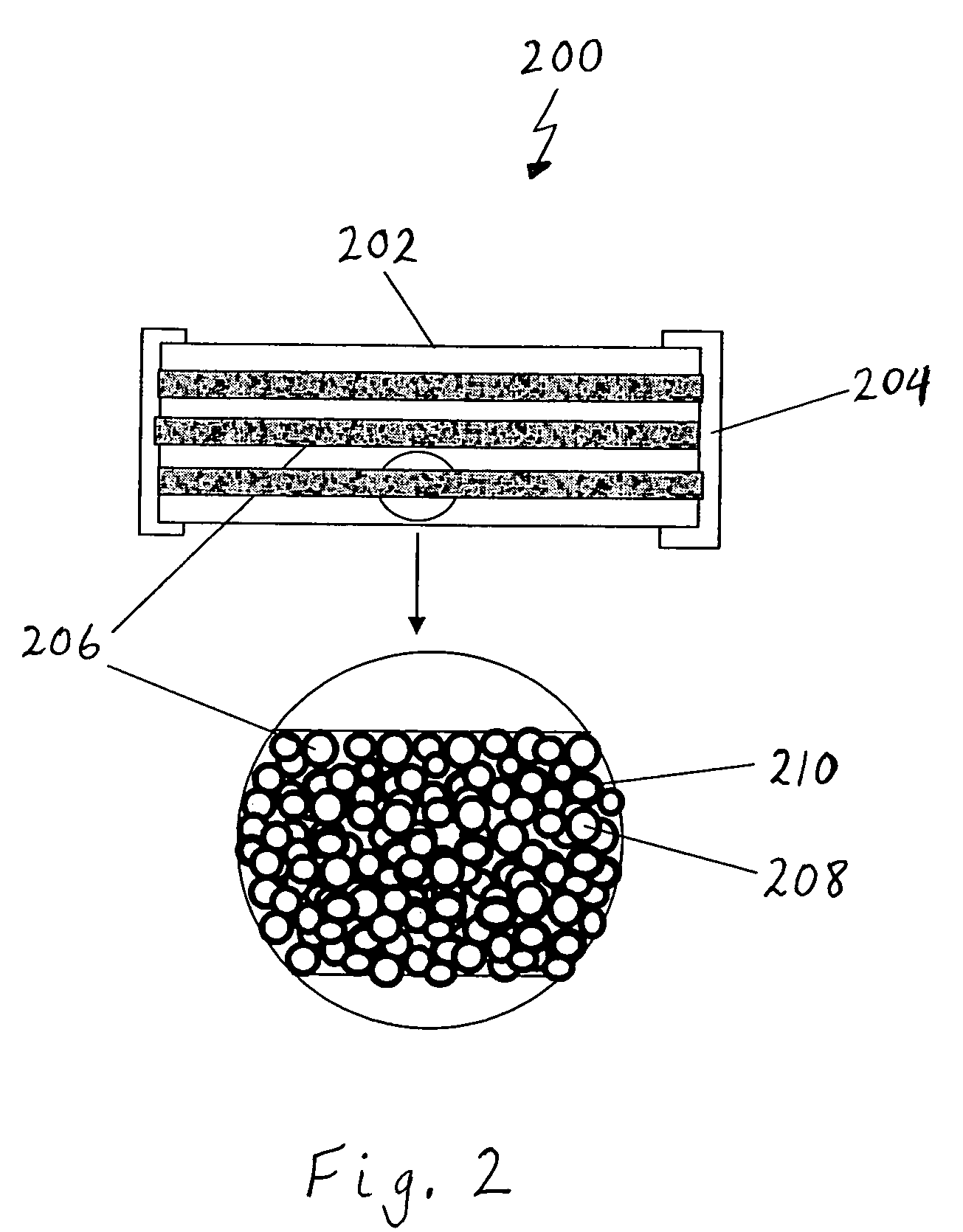Composite fuse element and methods of making same
a fuse element and composite technology, applied in the field of fuse elements, can solve the problems of circuit damage, circuit damage, arcing, etc., and achieve the effect of increasing and speeding up the ability of arc quenching
- Summary
- Abstract
- Description
- Claims
- Application Information
AI Technical Summary
Benefits of technology
Problems solved by technology
Method used
Image
Examples
Embodiment Construction
[0014]The invention, in accordance with various preferred embodiments, is described in detail below with reference to the figures, wherein like elements are referenced with like numerals throughout.
[0015]FIG. 1 illustrates a cross-sectional side view of a fuse 100 in accordance with one embodiment of the invention. The fuse 100 includes a fuse body 102 made from one or more layers of insulating material, such as glass ceramics, glass bond alumina or silicate, glass, ceramic materials, polymer materials with fire retardants, or other known suitable insulating materials. Two electrically conductive contact terminals 104 are positioned at opposite ends of the fuse body 102 to provide electrically conductive contacts to each end of a fuse element 106 disposed within the fuse body 104 and between the two contact terminals 104.
[0016]A cross-sectional portion of the fuse element 106 is magnified and shown within the circular region 106A of FIG. 1. As shown in circular region 106A, the fuse...
PUM
| Property | Measurement | Unit |
|---|---|---|
| diameter | aaaaa | aaaaa |
| temperature | aaaaa | aaaaa |
| particle sizes | aaaaa | aaaaa |
Abstract
Description
Claims
Application Information
 Login to View More
Login to View More - R&D
- Intellectual Property
- Life Sciences
- Materials
- Tech Scout
- Unparalleled Data Quality
- Higher Quality Content
- 60% Fewer Hallucinations
Browse by: Latest US Patents, China's latest patents, Technical Efficacy Thesaurus, Application Domain, Technology Topic, Popular Technical Reports.
© 2025 PatSnap. All rights reserved.Legal|Privacy policy|Modern Slavery Act Transparency Statement|Sitemap|About US| Contact US: help@patsnap.com



